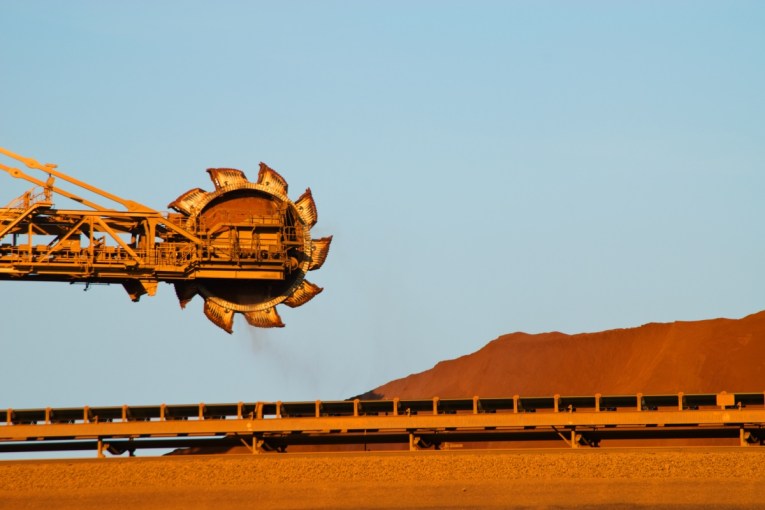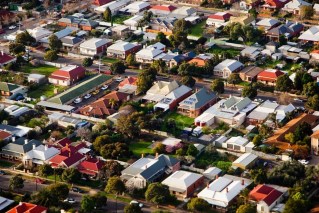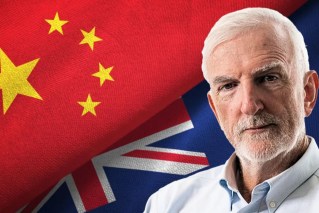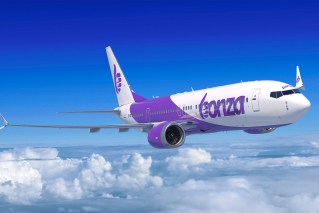‘Greedflation’ – it’s a boon for business but hurts average Australians

Markets don’t lift prices, individual companies do.
Qantas decides how much to charge you to fly from Sydney to Melbourne; Energy Australia decides how much to charge you for electricity, and your local cafe decides how much to charge you for a coffee and some toast.
People who decide the prices they charge us like to say that they ‘have no choice’, but they do.
They have the choice to increase their profits or lower your cost of living, and for most businesses it has become a very easy, and profitable, choice.
As the chart below shows, profits are rising faster than wages in nearly every industry, and that is simply because the owners of those companies are increasing their prices much faster than their costs are going up.
You can’t blame them for doing that, maximising their profit is their job, but you can blame them for pretending they ‘have no choice’.
And you can also blame the RBA for loading up so much pain on those with mortgages while being so unconcerned about surging profits.
The RBA likes to argue that surging world prices for gas, coal and iron ore are driving the record share of GDP going to profits and the record-low share of GDP winding up in the pockets of workers. But while that’s true in part, the RBA’s focus on mining profits does more to conceal what’s happening in Australia than reveal it.
If you ignore the mining industry altogether, the non-mining profit share of non-mining GDP was 21.9 per cent in 2022, well above the 10-year pre-COVID average of 20.1 per cent.
To put the 1.8 per cent of GDP surge in the non-mining profits into perspective, if non-mining businesses in Australia were only as profitable as they used to be they would have charged us almost $40 billion less this year in prices, or about $3500 per household. That would help a bit with the cost of living.
But why should we exclude the enormous windfall profits that the mining industry is making, in large part off the back of profiteering on the war in the Ukraine?
The ‘independent’ RBA
Instead of ignoring the $40 billion in windfall profits the gas industry made in 2021-22, why doesn’t the RBA point out that collecting a large part of those profits in tax and spending it on free child care, cheaper medicine and lower university fees would be a great way to lower inflation as all of those government-determined prices are included in our estimate of inflation?
The RBA loves to call itself independent, so why doesn’t it speak up about the fact that there are lots of other government policies that would lower inflation more effectively than simply lifting interest rates?
Why didn’t the ‘independent’ RBA rage against the reckless spending of the Morrison government or state clearly that the $250 billion worth of Stage 3 tax cuts coming next year make it harder to manage inflation?
Leaving aside the fact that neither the 2 to 3 per cent inflation that the RBA is so determined to pursue, nor even the word inflation, is even mentioned in the RBA’s governing legislation, research by the Australia Institute has shown that most of the current inflation surge is profit driven.
In fact, 70 per cent of the inflation that is above the RBA’s target range can be attributed to rising profits.
And if firms hadn’t increased their prices and profits so fast then real wages wouldn’t have fallen so much, interest rates wouldn’t be so high, and the squeeze on Australian households would not be nearly as bad.
And to be clear, while there is no mention of the 2 to 3 per cent inflation target in the RBA Act 1957, the RBA does have a statutory obligation to pursue “stability of the currency, full employment, and the economic prosperity and welfare of the Australian people”.
But rather than pursue their statutory obligations spelled out in their governing legislation the ‘independent’ RBA prefers to rely on a letter that successive treasurers have written them telling them to target 2 to 3 per cent inflation instead.
That’s not independent, it’s subordinate.
Profit grab
The post-COVID profit grab isn’t unique to Australia; the European Central Bank chief Christine Lagarde has pointed out that companies are taking advantage of other companies price increases to justify their own.
Chair of the US Federal Reserve Jerome Powell thinks inflation could come down faster if business stops rapidly increasing profits, and while his comments are significant, they are about as radical as saying the bathtub wouldn’t be so hot if you turned down the hot tap.
Even the lefties at Swiss banking giant UBS published a brief from its chief economist entitled ‘What is profit-driven inflation’. Hint, it’s not complicated.
But while this new, enormous redistribution from those who buy to those who sell is being called ‘greedflation’ in the US, here in Australia the RBA has been using the enormous surge in the profits of the mining industry to conceal the existence and the importance of the problem.
This week’s budget will announce some Band-Aids and fig leaves to help conceal the enormous shift in the distribution of Australia’s national income that is occurring and, more importantly, conceal the forces that are driving it.
Rather than introduce a windfall profits tax and divert some of the gas industry’s $40 billion in war profits to the Australian community, the Albanese government has announced an extra $600 million per year will be collected from the PRRT.
And while those earning more than $200,000 will soon get a permanent $9000 per year tax cut, low-income earners might soon get a temporary $500 energy supplement.
While it’s true that something is better than nothing, it’s also true that the more we talk about the tiny somethings that help those with the least, the less we talk about the underlying problems that are demolishing the Australian dream to make room for an even bigger mining industry.
Dr Richard Denniss is executive director at leading public policy think tank the Australia Institute
Twitter: @RDNS_TAI








